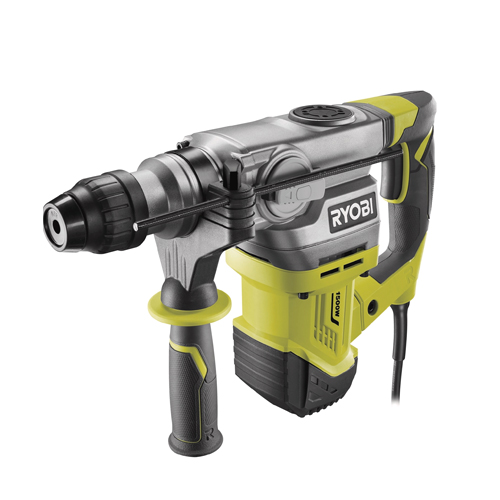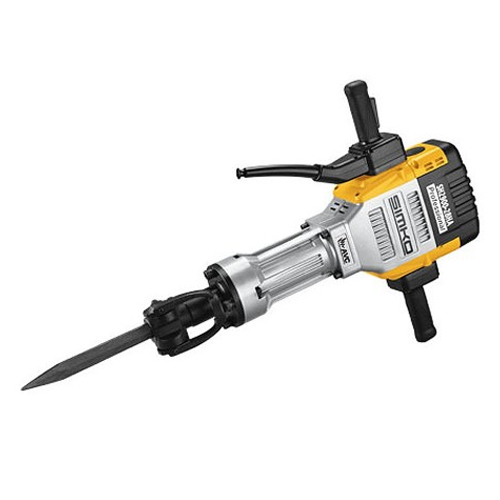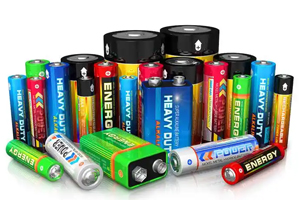The Complete Guide to SDS Drills: Everything You Should Know
Author:admin Date: 2025-03-04 06:41 Views:71

Whether working on a DIY or professional project, sometimes you need the right tools to ensure its success. For example, if you are building a piece of furniture and need to do some drilling, using SDS drills can help accomplish the project.
Mentioning SDS drills might have you intrigued to learn more about them. You are at the right place as we talk about the SDS drill, its various features, the types available, and much more.
What is an SDS Drill?
SDS (slotted drive system) drills are used for medium-duty to heavy-duty drilling thanks to their robust construction and build quality. The slotted drive system makes them good at handling different drilling needs. Also, the design allows for driving a drill bit faster so that it can easily drill through the material. No need to use a lot of pressure while working with such a drill.
They can be used for drilling through masonry, brick, concrete, steel, and wood. They are liked for several applications, knowing they can deliver.
SDS Drill Working Mechanism
When buying an SDS hammer drill, you expect it to deliver impressive performance and handle many applications. However, how does the SDS drill work?
The SDS drill has a hammer mechanism combined with a special chuck. This chuck is designed to work with SDS drill bits, ensuring they can move back and forth freely as the hammer action drives them into the material.
It is also worth mentioning the ball-bearing locking system of these drills. This system ensures that the bits are securely held in position while moving freely to drive into the different materials.
Whether you choose a Milwaukee SDS hammer drill or a DeWalt SDS hammer drill, you end up with more powerful drills than a standard hammer drill. That is what you need for the tough jobs.
SDS Drill Characteristics
There are a couple of things to expect when you buy SDS hammer drills. We have already seen that they have a slotted drive system. Other things you should know about an SDS rotary hammer drill include:
- They are designed to have the best handle and grip. This ensures you can drill smoothly since the tool is more stable. However, you can still get an auxiliary handle with some SDS hammer drills.
- For example, the Bosch SDS hammer drillcomes with a speed control mechanism. The variable speed option allows you to adjust how fast you can drill depending on the material you are working on.
- You will likely get a depth gauge with an SDS Plus hammer drill. The depth gauge controls how deep you drill the holes, ensuring precision while working on projects.
- A Milwaukee SDS drillwill have a gearbox like any other SDS drill. Its job is to transmit the power from the drill motor to the chuck. This gearbox also helps to adjust the speed and torque of your drill to achieve the right functionality.
- Any SDS drill’s power source can be corded or cordless. Cordless drills are more portable, making it easy to work on sites without electricity. However, the battery runtime can sometimes limit how long you can work on your project before recharging.
- Some models can have a dust extraction system. This is vital for controlling the amount of dust falling into the drill space.
- Most manufacturers of SDS hammer drillsprovide a carrying case for the unit and its accessories. Always return them to the case so that you do not lose anything.
Types of SDS Drills
There are several types of SDS drills in the market, categorized based on their operation. Here are the most common types.
Rotary Hammer SDS Drills

These are the most powerful SDS drills and are also common in the market today. They feature both hammering and rotary drilling actions, which makes them good for drilling into hard materials such as brick, stone, and concrete.
Also, they have a piston mechanism that keeps delivering the hammer action to the SDS drill bits while rotating at fast speeds. This helps with rapid drilling regardless of the material.
SDS Plus and SDS Max

These two are categorized based on the power and size of the tool.
We recommend using SDS Plus drills for light to medium-duty tasks. The SDS Max drills, on the other hand, are suitable for heavy-duty and industrial applications.
The biggest difference is the hammer mechanism, power, and chuck size. Expect to find the SDS max drills with more drilling capacity.
SDS Quick and SDS Top

SDS-Quick is best described as a variation of the SDS-plus with a design that allows for quick change of drill bits and accessories. You do not need any tools to swap the drill bits and accessories.
SDS-Top might not be as common, but you can still find a use for it, mostly when working on chiseling or demolition work.
SDS Hex Drills

They are called hex drills because of their hexagonal check compared to the common round SDS chuck.
The chuck design also makes them suitable for specialized applications thanks to their stability and durability. They work well with various bit types and chiseling attachments.
SDS Drill Bits: Choosing the Right One

If you have an SDS Plus rotary hammer drill or any other SDS drill type, you need the right SDS drill bits for it to work correctly. Below are various SDS drill bits you can get today.
SDS-Plus Drill Bits
These are probably the most common SDS drill bits in the market. You can use them for light to medium-duty applications. Examples include drilling concrete, masonry, and bricks.
These bits have a 10mm shank diameter and work best with the SDS-Plus rotary drills and hammers.
You can find the bits in multiple diameters and lengths. Such allows for versatility, especially when working on a wide range of applications.
SDS-Max Drill Bits
A Dewalt SDS drill could also use the SDS-max drill bits. These drill bits are meant for the more powerful SDS-Max rotary hammers. Therefore, they would also need more substantial drill bits to match the drill power.
Expect them to work exceptionally well for tough materials such as reinforced concrete.
An 18mm shank diameter is key to the construction of the drill bit. It offers a strong connection with the drill, ensuring that the extra power and torque are well-handled each time you use the drill bit.
SDS-Top Drill Bits
They might not be common, but they are still worth looking at. Their 14mm shank diameter makes them designed for medium—to heavy-duty drilling. You can use them to drill materials such as masonry and concrete.
These bits are also good for someone looking for a balance between the SDS-Plus and SDS-Max drill bits. They still offer good durability and strength.
Safe Use of SDS Drills
There are several things you should do while using a Bosch SDS Max hammer drill or any other SDS drill to ensure safety and also keep the drill in good working condition. Here are a few tips to consider.
- Wear protective equipment at all times. This includes goggles, masks, or safety glasses while working on a project.
- Use the correct drill bit for the material you are working on. It should also be fitted securely and double-checked.
- Do not force the drill while drilling into a surface. You only need light pressure and speed to drill through the material.
- Start by cleaning the area you want to drill before working on it. This will remove all debris and obstructions that could cause injuries or damage to the drill bit.
- Inspect your drill for damage before using it. The same goes for the drill bit. If it is damaged, have it replaced with a good one.
- Always secure your workpiece when using a Dewalt 20V SDS hammer drill. This helps avoid potential accidents.
Maintenance Tips for SDS Drills
Your Bosch SDS drill or any other SDS drill brand will last longer if you only give it some good maintenance. The best part is that you do not need to do a lot for the maintenance part.
First, cleaning after each use might not seem much, but it will keep the Milwaukee SDS rotary hammer drill working great the next time you need to use it. Simply use a clean cloth to wipe every dirty piece of the drill.
Lubrication is important for all SDS drills. For smooth operation, consider applying grease to the SDS coupling and chuck. Depending on the material you are drilling into, the SDS drill bit set also needs lubrication.
Inspect your SDS masonry drill bits or all the other bits for signs of excessive wear, cracks, and chipping. You do not need to worry about performance if the drill bit set is in good condition. Replace all the damaged or worn bits immediately.
As for storage, we recommend storing the SDS drill in a cool, dry place. The idea is to keep it away from a lot of humidity or moisture. A good storage case is also worth getting to prevent any damage to the bit.
How to Choose the Right SDS Drill

The type of SDS drill you choose can always affect if you will get the job done right or not. Therefore, we look at some tips to help you pick the right SDS drill.
Consider the Application
Look at the type of work you will handle before choosing a Milwaukee M12 SDS drill. Each SDS drill model has different capabilities. Some are great for heavy-duty applications, while others are rated for light to medium-duty applications.
Before buying, look at the features to ascertain where you can best use the SDS drill.
The Power Source
Of course, you need a way to power the SDS drill. The main choices are corded or cordless SDS drills.
The corded SDS Bosch hammer drill is for those who want more powerful drills without also worrying that there will be no power when the project is still ongoing. Expect them to be also ideal for heavy-duty applications.
The cordless SDS drills are still good for mobility and flexibility. They should be easy to work with when no power source is close. The improved battery technology gives you good battery life with newer SDS drills.
Drill Features
Different manufacturers will have different features, but some will be the same across the board. So, what are the features to look at?
Look at the variable speed control. This is what helps you change the speed at which you operate the SDS drill. Make sure that you can get a model with adjustable speed control.
An adjustable clutch is also key to more control over the drilling process. So, it would be nice to have it with your drill.
Look at the chuck size to determine the maximum drill bit diameter the SDS drill can use. A larger chuck means you can use the bigger, heavy-duty drill bits for those tough jobs.
The depth gauge will also be a great tool as it helps set the right drilling depth. This is vital for applications such as anchor installations.
Comfort and Ergonomics
Choose an SDS drill that offers an ergonomic design. Such a design helps you have a well-balanced body and still a comfortable drill that you can use for various applications.
If you might be working on a project for long hours, it is advisable to consider a comfortable drill to reduce fatigue.
Brand Reputation
Looking at brand reviews can help you learn more about the products you are likely to end up with. Doing more research about the brand is the key to picking the one offering high-quality SDS drills and customer support when needed.
Common Issues and How to Troubleshoot Them

An SDS drill can have a couple of issues. Understanding them can help deal with the issues and keep the drill working smoothly. Here are the most common and what you should do about them.
Drill not hammering
Check the selected mode. If you have chosen the right mode and it is still not working, it could be that you are not using the hammering mode, and thus, it is not hammering. Check for any potential malfunction.
Drill bits are stuck in workpieces
Reduce the pressure you use while drilling back to remove the bit. Also, check to see if you are using the right drill bit for the material.
You could still unplug the drill and try to remove the stuck bit manually.
Excessive drill heating
An SDS drill can heat up if you are using too much pressure. Try to use less force while drilling. Taking breaks and letting the drill cool is also a good measure.
Make sure the drill’s air vents are cleaned to allow for cooling.
The drill bit is not locking in the drill’s chuck
Check for signs of wear and tear in the chuck mechanism. If it is worn, it cannot hold the bit securely. If it is too worn, and changing the ball bearings does not help, you should consider replacing the chuck.
Sometimes, a good clean is all that is needed to ensure a good grip.
Excessively vibrating
You should check the condition of the drill bit. Sometimes, it could be misaligned, damaged, or worn.
Ensure that you also use the right drill bit size for the application. Secure the workpiece so that it does not move around a lot when you are drilling into it.
Conclusion
Looking at what you can do with an SDS drill, it is clear that you should have one as part of your tools collection. It is great that you can use it to drill even tough surfaces and materials without a problem. Make sure to take good care of your SDS drill, and it will serve you quite well. Also, buying from top brands ensures you have the best drills for various applications.


